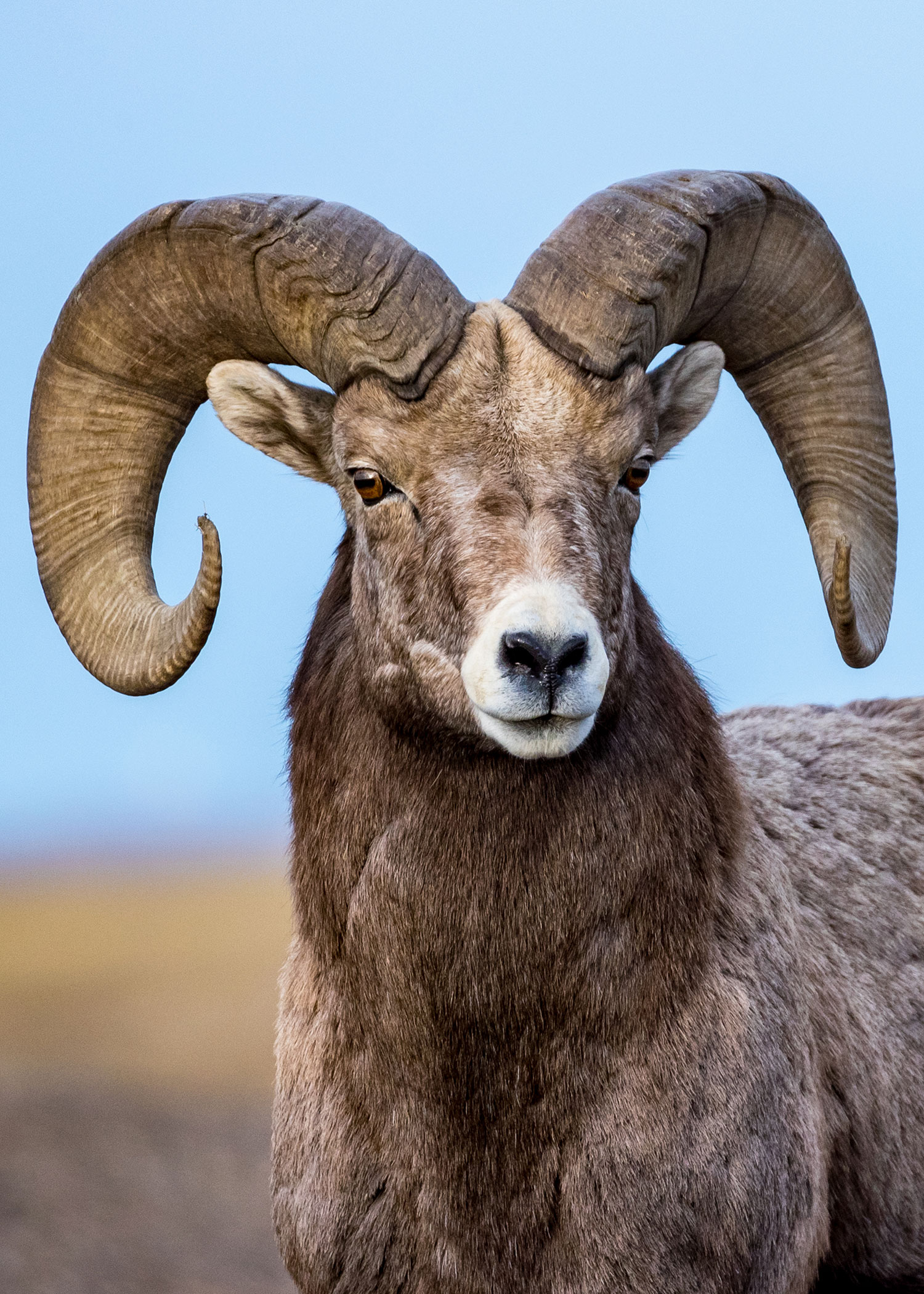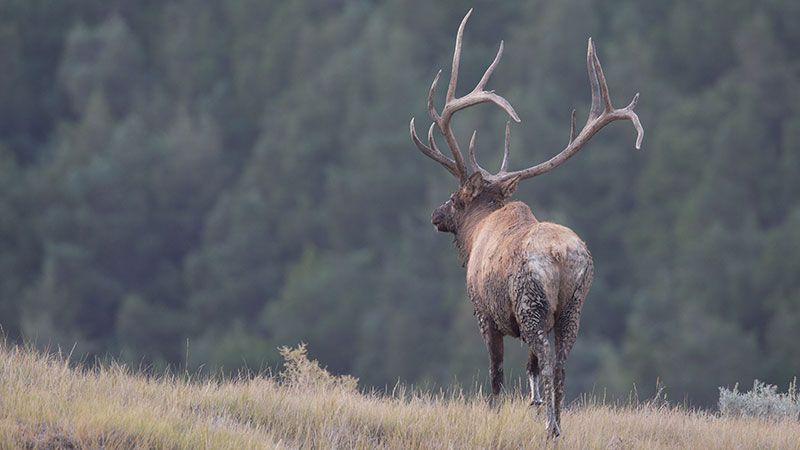Draw of a Lifetime
Ron Wilson

North Dakota’s application deadline for moose, elk and bighorn sheep — rightly called the Big 3 in some circles — was in late March.
By now, we know the outcome.
If you were drawn, congratulations. If not, there’s always next year, but don’t hold your breath.
“We call them the Big 3 because they’re kind of a big deal in North Dakota, as moose, elk and bighorn sheep provide hunters once-in-a-lifetime opportunities for those who get drawn,” said Casey Anderson, North Dakota Game and Fish Department wildlife division chief. “Some people think that it’s once in their lifetime they’re going to get drawn, but realistically, many of us may never get drawn.”
Residents, at least those lucky enough to draw, started hunting moose (1977), elk (1983) and bighorn sheep (1975) in North Dakota decades ago.
Yet, things look drastically different today when you consider the rise in the number of hunting opportunities and the number of people who cross their fingers in anticipation of possibly, maybe garnering the chance to pull the trigger.
In 1984, for instance, the Game and Fish Department made available just 50 moose licenses and 30 elk licenses, and roughly 8,600 hunters applied for the former and about 3,000 for the latter.
In 2023, on the other hand, more than 26,000 hunters applied for 253 moose licenses, while about 24,000 applied for 599 elk licenses.
“It’s a different world out there today when you think about the hunting opportunities for moose and elk, in particular, compared to years ago,” Anderson said. “And, certainly, you can’t ignore the dramatic rise in the interest of hunters wanting their shot at these once-in-a-lifetime opportunities.”
Conversely, with bighorn sheep, the Department makes available so few licenses (five in 2023) every fall by comparison, likely making it the most coveted draw of the three. Yet, unlike moose and elk, where the Department allocates both cow and bull tags, the licenses for bighorns are strictly for rams.
The hunting opportunities, especially for elk, continued to climb in 2024. The Game and Fish Department made available a record 833 elk licenses, or 230 more than last year.
“We increased elk tags a fair bit, mainly in northeastern North Dakota,” Anderson said. “A lot of those were cow licenses, but there were some any elk licenses that were increased, too.”
The increase came after the Department hired a company to conduct aerial infrared surveys during winter 2022-23 in the heavily wooded Turtle Mountains and Pembina Hills.
“Those elk, especially in the Turtle Mountains, are extremely difficult to survey with traditional survey methods because of the canopy cover,” Anderson said. “What this infrared technology showed was that we’ve been underestimating the number of elk in that area.”
Anderson said because the survey information came out after the release of last year’s proclamation, the large bump in elk licenses in the northeast couldn’t be made until the 2024 hunting season.
Moose populations in northeastern North Dakota aren’t doing as well as elk as their numbers remain lower in historical hunting units in the Turtle Mountains, Pembina Hills and along the Red River corridor. Moose unit M1C, located in the Pembina Hills region, has been closed since 2006 and moose unit M4, which encompasses the Turtle Mountains, is also closed.
When it comes to hunting moose in North Dakota, Anderson said you can make that hunt as hard as you want or as easy as you want.
“We have moose that live along the Missouri River by the Yellowstone confluence south of Williston … that’s probably the moose hunt in North Dakota that’s going to look like an Alaska moose hunt. You’re going to be down in the willows. They’re going to be hard to see. You’re going to be close sometimes,” he said. “When you get into some of these agricultural units where you can talk to some landowners who typically see moose, the hunt can be fairly easy if you can find them. Finding them is the biggest thing. They’re big animals, but they hide pretty well.”
While the 2024 moose and elk hunters already know who they are, news of a 2024 bighorn season, which is anticipated, and the hunters who drew licenses won’t be announced until sometime in early September. This process is nothing new as the Game and Fish announced in winter the status of the bighorn sheep hunting season would be determined after completion of the upcoming summer population survey.
“Our bighorn sheep biologist, Brett Wiedmann, is counting lambs in the badlands, counting reproduction, classifying rams to see how many we think we have that we can take out of the population,” Anderson said. “So, hunters apply first, and then we generate the ‘luckiest list in the world,’ as some would call it, and start calling those folks and if somebody would turn us down, we’d go to the next one on the list. But nobody has yet.”

Big 3 in Review
| Licenses Available | Applications Received | |
|---|---|---|
| 2018 | ||
| Moose | 330 | 21,041 |
| Elk | 404 | 18,082 |
| Bighorn sheep | 3 | 14,615 |
| 2019 | ||
| Moose | 475 | 22,456 |
| Elk | 489 | 19,290 |
| Bighorn sheep | 4 | 15,520 |
| 2020 | ||
| Moose | 470 | 24,027 |
| Elk | 532 | 21,069 |
| Bighorn sheep | 5 | 16,935 |
| 2021 | ||
| Moose | 470 | 26,034 |
| Elk | 519 | 23,016 |
| Bighorn sheep | 5 | 19,126 |
| 2022 | ||
| Moose | 400 | 26,038 |
| Elk | 559 | 23,427 |
| Bighorn sheep | 5 | 20,290 |
| 2023 | ||
| Moose | 253 | 26,386 |
| Elk | 599 | 24,091 |
| Bighorn sheep | 5 | 20,290 |

